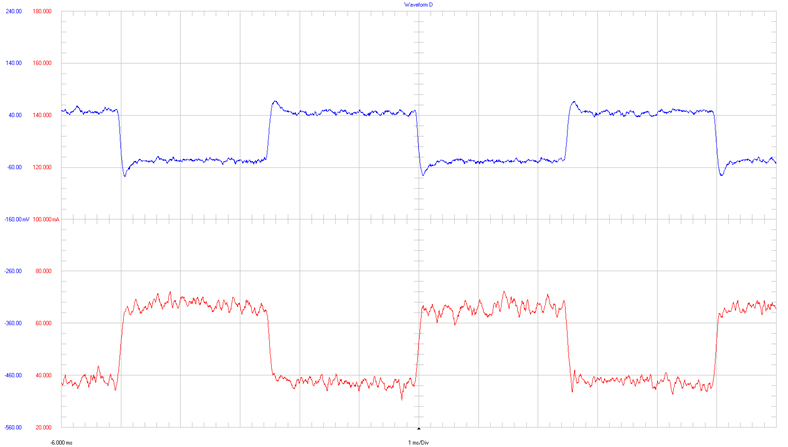TIDT351 September 2023
- 1
- Description
- Features
- Applications
- 1Test Prerequisites
- 2Testing and Results
- 3Waveforms
3.4.1.1 Effects on VOUT-A

|
VOUT-A 100 mV / div IOUT-A 20 mA / div 1 ms / div 10-kHz bandwidth |
Figure 3-16 Transient on VOUT-A ⇒ VOUT-A